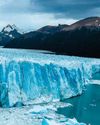THE WORLD'S MOST POWERFUL LASERS
How It Works UK
|Issue 206
What happens when a beam of energy 100 times the power of the global electricity grid is concentrated onto a pinpoint?

Lasers are devices that produce a narrow beam of polarised light. However, unlike the beam of a torch, a laser's light can carry extraordinary amounts of energy. When focused to a narrow point, lasers can cut or melt metal and even generate enough energy to replicate conditions in deep-space environments such as the inside of a star.
A laser's three main components are an energy source, a gain medium and an optical resonator. The first component, also known as a pump, is the energy that excites the medium, often using an electric current. The gain medium is a material that amplifies the light before it's directed through the optical resonator, an arrangement of mirrors, for further amplification as light is reflected multiple times through the gain medium.
Lasers are classified based on their strength, with the least powerful being class I and the most powerful being class IV. Their power is expressed in watts, with each watt the equivalent of one joule of energy emitted every second. Class I is not a hazard and poses no risk to human skin or eyes, while class IV lasers are those with a power output above 500 milliwatts. These can cause fires and are used for industrial applications.
The most powerful lasers can reach levels far above this, however, in the order of petawatts of power - a petawatt is 1,000,000,000,000,000 watts. With lasers this powerful, scientists can vaporise matter, create matter from light and mimic the conditions of a black hole. This means materials and conditions that usually only exist in the most extreme environments can be recreated on Earth, helping scientists better understand the nature of the universe.
DIFFERENT TYPES
This story is from the Issue 206 edition of How It Works UK.
Subscribe to Magzter GOLD to access thousands of curated premium stories, and 10,000+ magazines and newspapers.
Already a subscriber? Sign In
MORE STORIES FROM How It Works UK
How It Works UK
20 WEARABLE HEALTH TRACKERS
Whether you strap a wellness coach to your wrist or weave subtle sensors into your clothes, these devices are revolutionising how we track our health
9 mins
Issue 210
How It Works UK
SUPERPOWERED PLANTS
The world of plants is vibrant and diverse, just like this book.
1 min
Issue 210
How It Works UK
SECRET STORIES OF LOST BEASTS
We're all aware of the mighty dinosaurs that once roamed Earth, but there are so many weird and wonderful species that have been lost to time.
1 min
Issue 210

How It Works UK
ALL ABOUT BLIMPS
Is it a bird? Is it a spaceship? No... it's a non-rigid airship
2 mins
Issue 210
How It Works UK
SUPER QUESTERS MISSION: RAINFOREST MAGIC
Join adventurers Leo, Lilli and Bea as they transform into superheroes and journey to the rainforest in the pursuit of knowledge.
1 min
Issue 210

How It Works UK
HOW THE MIGHTY MAMMOTH RULED THE ICE AGE
Meet the prehistoric giants that roamed the Arctic Circle thousands of years ago
4 mins
Issue 210
How It Works UK
Have they found LIFE ON MARS?
Although it's by no means certain, scientists are slowly accumulating evidence that life once existed on the Red Planet
2 mins
Issue 210

How It Works UK
HOW FAST DO GLACIERS MOVE?
The speed at which a glacier flows depends on its mass, the depth and slope of the underlying rock bed and friction.
1 min
Issue 210

How It Works UK
HOW IN-FLIGHT WI-FI WORKS
This technology allows you to scroll to your heart's content while killing time at cruise altitude
3 mins
Issue 210

How It Works UK
HOW WIGWAMS WERE BUILT
Discover the construction and living conditions inside these traditional domed dwellings
1 mins
Issue 210
Listen
Translate
Change font size

